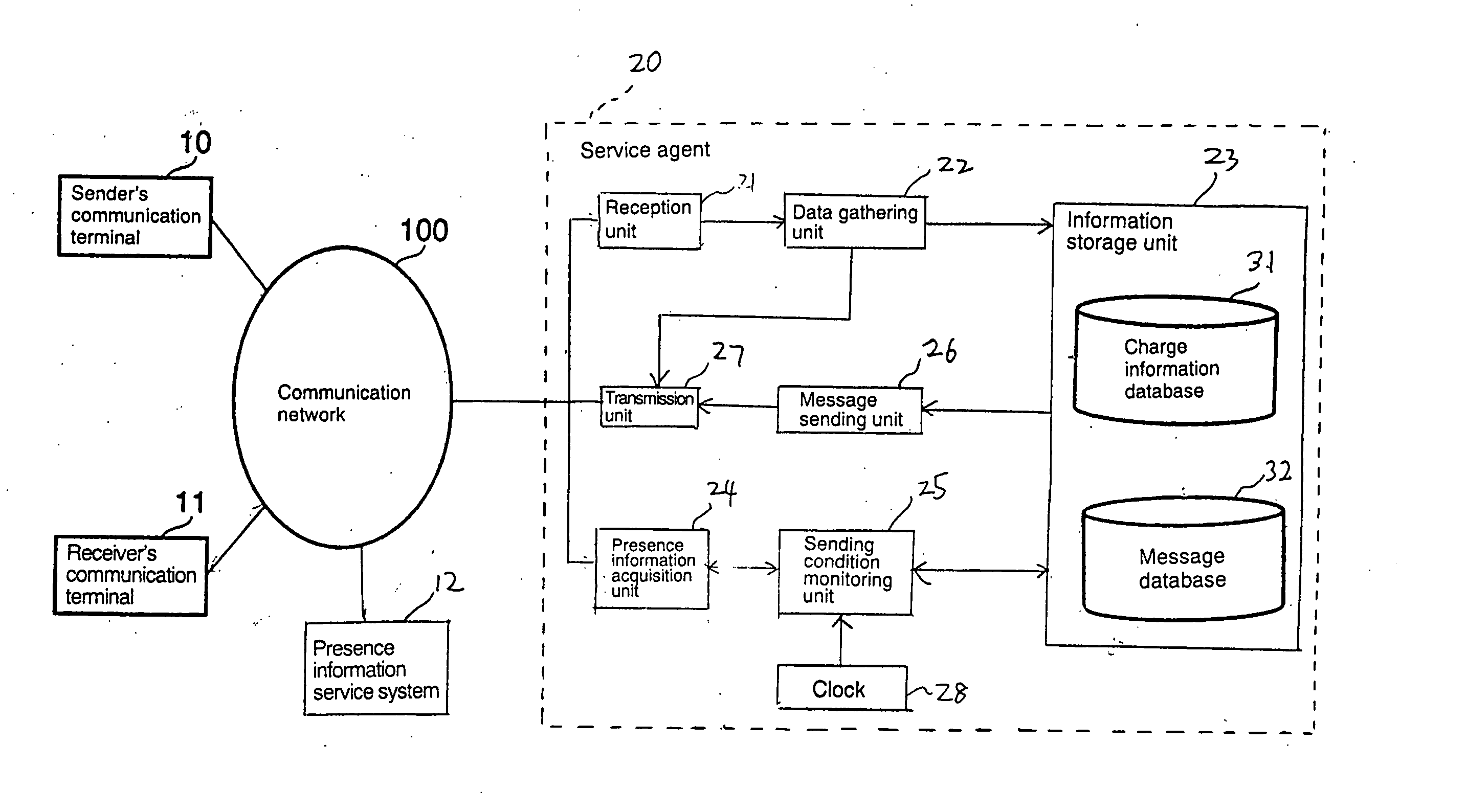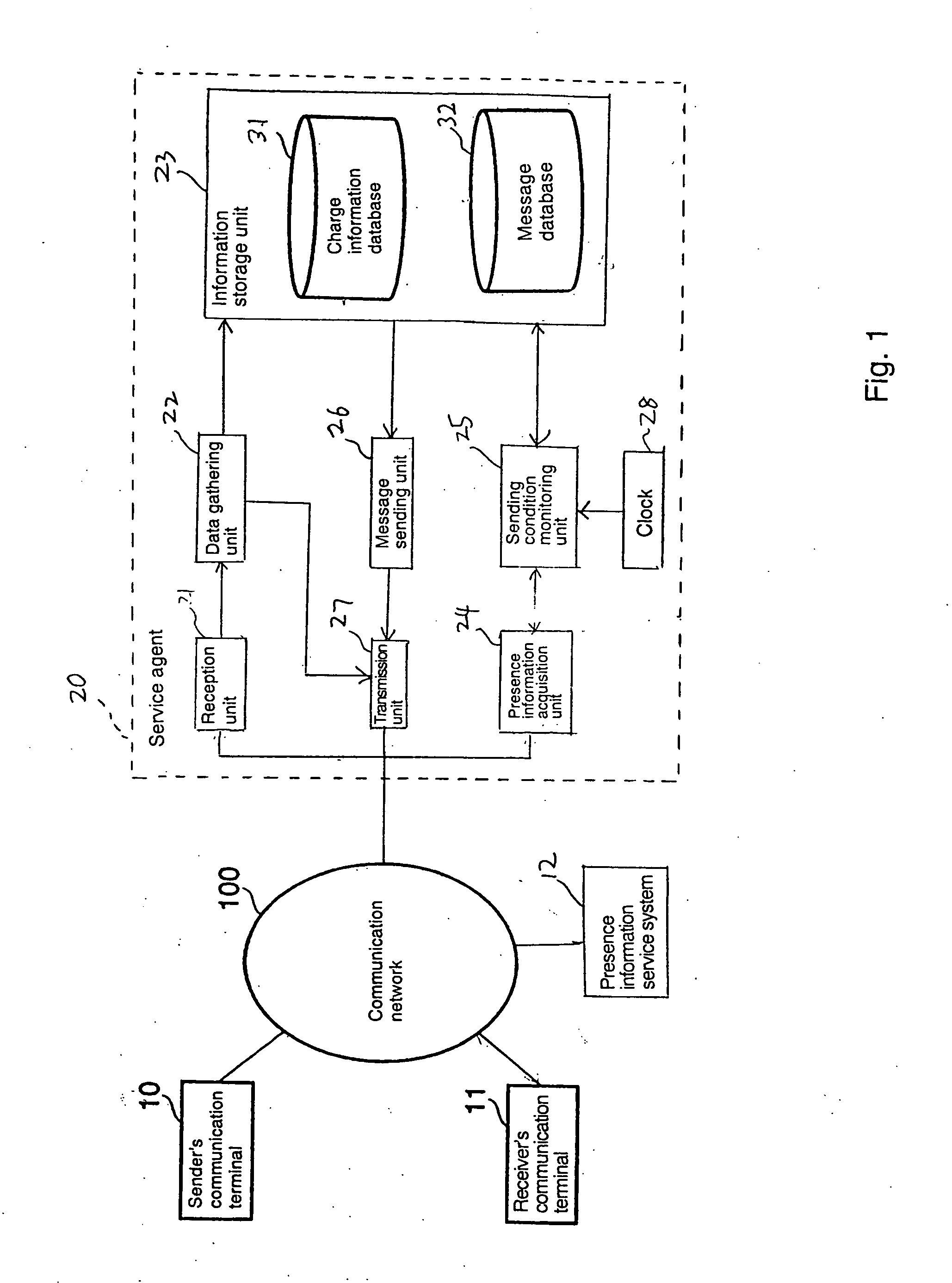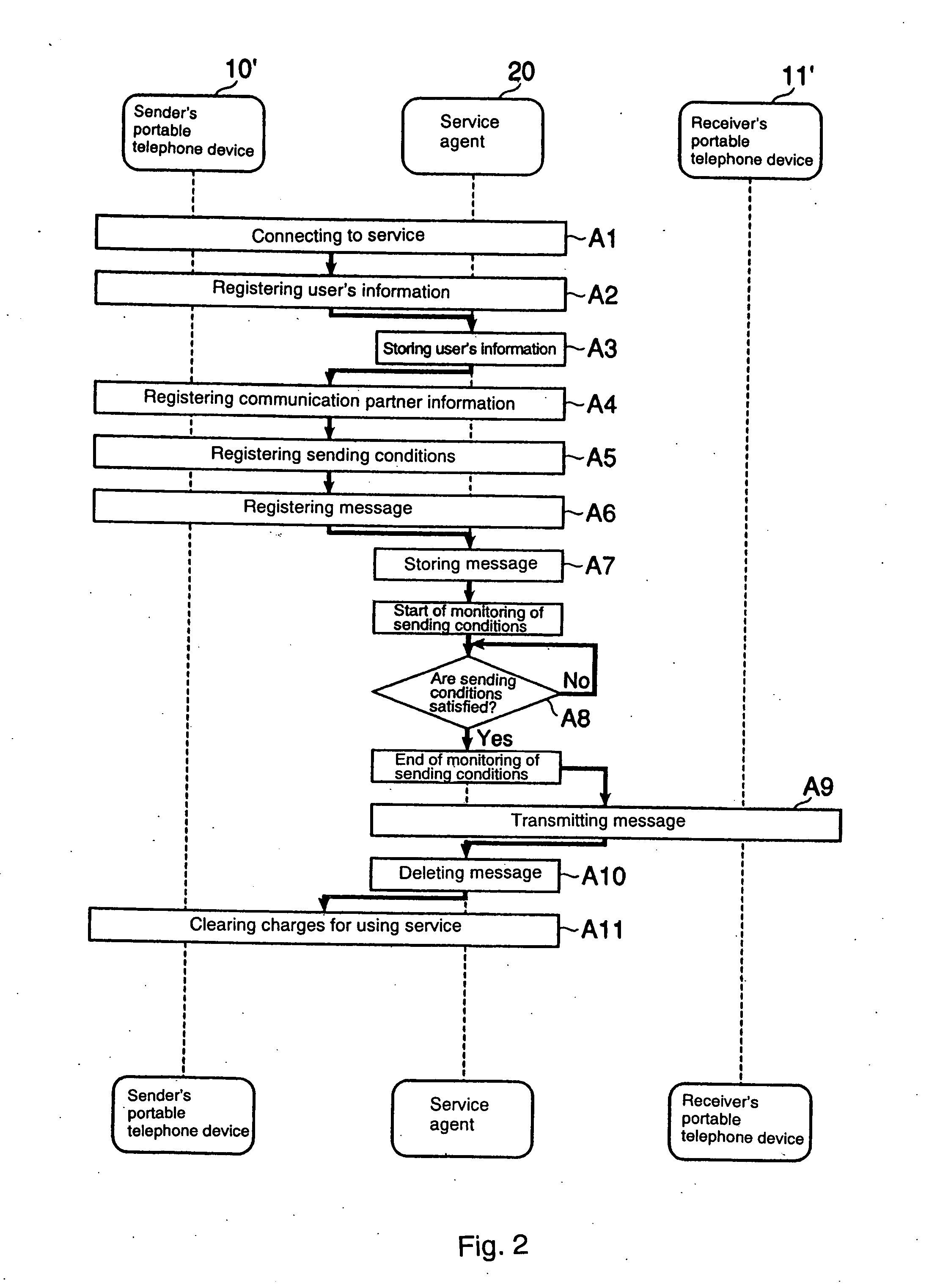Method for automatically sending messages at desired appropriate timings and an automatic message sending service system
a message sending service and automatic message technology, applied in the field of automatic message sending service system, can solve the problems of inability to directly see or hear a message, considerable time and trouble for the sender, and the sender's circumstances are also subject to changes, so as to avoid continuation of a pointless monitoring process, improve the convenience of the method, and improve the effect of automatic message sending
- Summary
- Abstract
- Description
- Claims
- Application Information
AI Technical Summary
Benefits of technology
Problems solved by technology
Method used
Image
Examples
Embodiment Construction
[0022] The present invention provides a service system for, when a sender is to convey a message by means of a telephone or email to a receiver by way of a communication network, executing processes for setting the message and the sending conditions for this message and then sending the prescribed message when the prescribed sending conditions have been realized. FIG. 1 is a block diagram showing the configuration of service agent 20 that constitutes the automatic message sending service system according to an embodiment of this type of the present invention.
[0023] In FIG. 1, sender's communication terminal 10 and receiver's communication terminal 11 are able to communicate by way of communication network 100. Sender's communication terminal 10 and receiver's communication terminal 11 may be communication devices such as telephone terminals, personal computers that are provided with a network capability, or portable telephone devices. Communication network 100 can include a fixed t...
PUM
 Login to View More
Login to View More Abstract
Description
Claims
Application Information
 Login to View More
Login to View More - R&D
- Intellectual Property
- Life Sciences
- Materials
- Tech Scout
- Unparalleled Data Quality
- Higher Quality Content
- 60% Fewer Hallucinations
Browse by: Latest US Patents, China's latest patents, Technical Efficacy Thesaurus, Application Domain, Technology Topic, Popular Technical Reports.
© 2025 PatSnap. All rights reserved.Legal|Privacy policy|Modern Slavery Act Transparency Statement|Sitemap|About US| Contact US: help@patsnap.com



